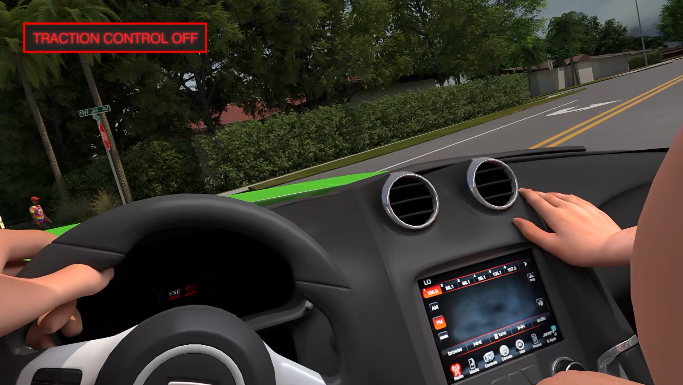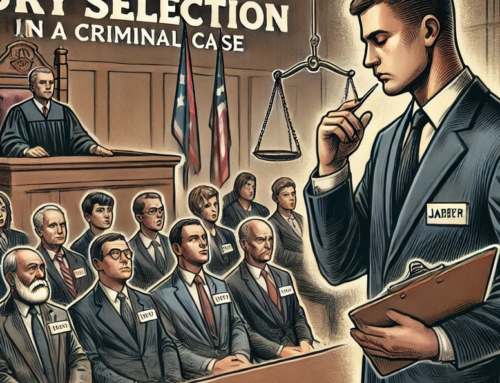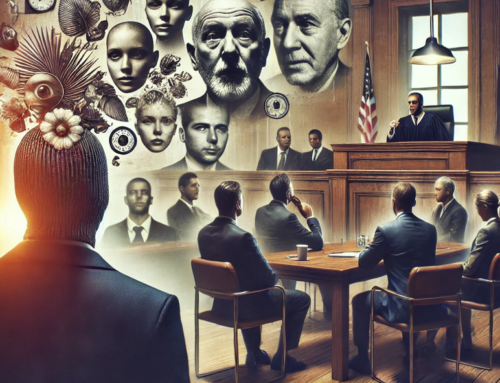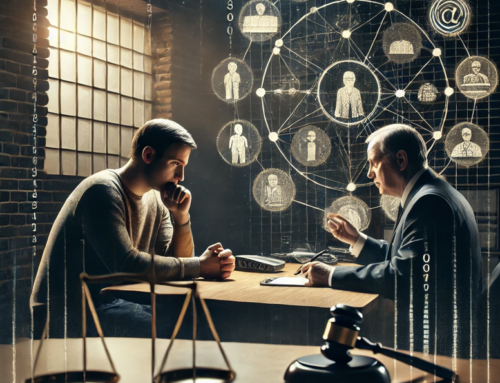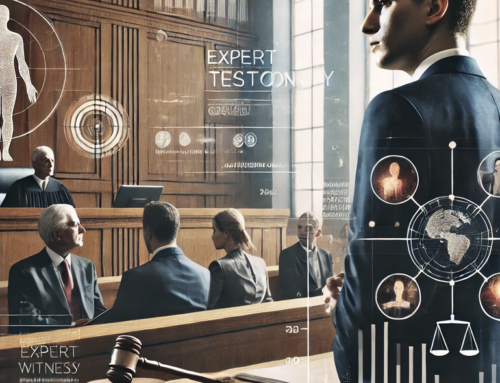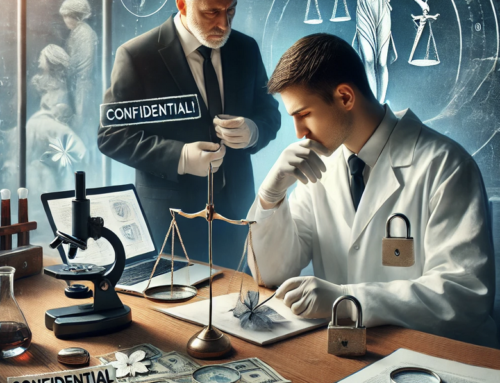Forensic Computer Animation and Forensic Computer Simulation: A Guide for Practicing Trial Attorneys
In the evolving landscape of courtroom litigation, the use of advanced technology has become increasingly prominent. Among the most impactful technological tools are forensic computer animations and forensic computer simulations. These visual aids can help clarify complex concepts for judges and juries, offering a more understandable depiction of evidence. However, despite their similarities, forensic computer animations and simulations are distinct in their applications, methodologies, and evidentiary implications.
Understanding the differences between these two tools is crucial for practicing trial attorneys, especially in light of Florida’s rules of evidence. This post delves into the nuances of forensic computer animation and simulation, explores the relevant Florida statutes and case law governing their admissibility, and provides practical tips for attorneys looking to leverage these tools effectively in trial.
Forensic Computer Animation: An Overview
Forensic computer animation is a visual representation designed to recreate events based on witness testimony, physical evidence, or expert opinions. These animations are typically used to illustrate how an event might have occurred, providing the jury with a visual interpretation that supports the narrative presented by one of the parties.
Key Characteristics of Forensic Computer Animations:
- Illustrative Purpose: The primary function of forensic animation is to illustrate a witness’s or expert’s testimony. It acts as a visual aid to help the jury better understand the sequence of events or the spatial relationships in a case.
- No Predictive Value: Animations do not predict outcomes or simulate future events. Instead, they represent past occurrences based on the evidence and testimonies provided.
- Dependent on Human Input: Animations rely heavily on the input provided by witnesses and experts. The accuracy of the animation is directly tied to the quality and reliability of the information it is based on.
- Used for Presentation: Forensic animations are often used during opening statements, witness testimonies, or closing arguments to reinforce the verbal narrative with visual support.
Common Applications of Forensic Animations:
- Accident Reconstruction: Visualizing the sequence of events in a car accident based on physical evidence like skid marks, vehicle damage, and road conditions.
- Crime Scene Recreation: Illustrating the positions of individuals involved in a crime, the trajectory of bullets, or the timing of events based on witness testimony and forensic evidence.
- Medical Malpractice Cases: Demonstrating surgical procedures, the progression of a medical condition, or the impact of an injury on the human body.
Forensic Computer Simulation: An Overview
Forensic computer simulation, on the other hand, involves creating a mathematical model to replicate the behavior of systems or events under specific conditions. Simulations are more complex than animations and are used to analyze and predict outcomes based on a set of variables and initial conditions.
Key Characteristics of Forensic Computer Simulations:
- Predictive and Analytical: Simulations are used not just to illustrate events but to analyze them and predict possible outcomes. They can simulate various scenarios by altering variables within the model.
- Mathematical and Scientific Foundation: Unlike animations, simulations are grounded in mathematical equations, physics, and other scientific principles. They require a rigorous validation process to ensure accuracy and reliability.
- Independent of Human Input: While initial conditions and parameters are set by experts, the simulation’s outcomes are generated by the computer model, which processes the data according to scientific laws.
- Used for Analysis and Expert Testimony: Simulations are often used by experts to support their analysis and conclusions. They are typically presented during the expert’s testimony to substantiate their opinions with scientifically derived data.
Common Applications of Forensic Simulations:
- Crash Simulations: Analyzing the impact forces, vehicle dynamics, and occupant kinematics in a vehicle collision.
- Structural Failure Analysis: Simulating the behavior of a building or structure under various stress conditions to determine the cause of failure.
- Environmental Modeling: Simulating the spread of pollutants, the impact of environmental changes, or the dynamics of natural disasters like floods or hurricanes.
Differences Between Forensic Computer Animations and Simulations
While both forensic animations and simulations serve as powerful tools in the courtroom, they differ significantly in their purposes, methodologies, and implications.
- Purpose:
- Animation: Used primarily to illustrate and support the narrative provided by witnesses or experts.
- Simulation: Used to analyze and predict outcomes based on scientific data and models.
- Methodology:
- Animation: Created based on witness testimonies, physical evidence, and expert opinions, relying heavily on subjective input.
- Simulation: Built on mathematical models and scientific principles, requiring rigorous testing and validation.
- Role in the Courtroom:
- Animation: Typically used as a demonstrative aid during trial to help the jury visualize complex events or concepts.
- Simulation: Often used as substantive evidence to support expert testimony, providing scientific analysis of how events likely occurred.
- Evidentiary Standards:
- Animation: Generally admissible as demonstrative evidence if it is a fair and accurate representation of the testimony it illustrates.
- Simulation: Must meet higher evidentiary standards due to its scientific nature, often requiring validation under the Daubert or Frye standard (depending on the jurisdiction).
Applicable Florida Rules of Evidence: Statute and Case Law
In Florida, the admissibility of forensic computer animations and simulations is governed by both statutory law and case law. Attorneys must be aware of these rules to effectively introduce these tools in court.
Florida Statutory Framework
Florida no longer follows the Frye standard, but has recently adopted the Daubert standard as codified in Section 90.702 of the Florida Evidence Code, which addresses the admissibility of expert testimony.
Under section 90.702 and Daubert, this Court must act as gatekeeper, “excluding evidence unless it is reliable and relevant” to “ensure that speculative, unreliable expert testimony does not reach the jury” under the mantle of reliability that accompanies the appellation “expert testimony”. See Sanchez v. Cinque, 238 So. 3d 817 (Fla. 4th DCA 2018) (citing Crane Co. v. DeLisle, 206 So. 3d 94 (Fla. 4th DCA 2016) (“The court’s gatekeeping function requires more than simply ‘taking the expert’s word for it.”)); see also Chappell v. Carnival Corp., 666 F. Supp. 3d 1316 (S.D. Fla. 2023) (explaining that the Court’s role as gatekeeper “is especially significant given that an expert’s opinion can be both powerful and quite misleading”).
Forensic animations, as demonstrative aids, generally do not face the rigorous scrutiny applied to scientific evidence under Daubert. They may be presented as demonstrative aids (not necessarily admissible into evidence) if they accurately depict the testimony or evidence they are intended to illustrate and do not mislead the jury. Forensic simulations, however, must undergo Daubert scrutiny because they involve scientific modeling and analysis. The court will consider whether the simulation’s underlying methodology is generally accepted in the scientific community, among other factors. Additionally, the expert presenting the simulation must be qualified to explain and validate the simulation process.
Key Florida Case Law
Several Florida cases have shaped the legal landscape for the admissibility of expert testimony, and forensic computer animations and simulations:
- Pierce v. State (1997): In this case, attorney Kenneth Padowitz, while employed as a Broward County prosecutor in 1992, was the first to utilize a forensic animation demonstrative exhibit in court which was upheld on appeal by the Florida Supreme Court. Ultimately, Padowitz secured a felony conviction of the hit-and-run defendant who was charged with vehicular manslaughter, where three children walking home through a residential neighborhood in
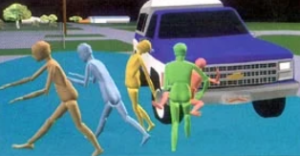 Dania, Florida, were hit by a pickup truck, resulting in the death of the six-year-old child and serious injuries to the two older children.
Dania, Florida, were hit by a pickup truck, resulting in the death of the six-year-old child and serious injuries to the two older children. - McMullen v. State (1998): In this case, the Florida Supreme Court addressed the admissibility of a forensic animation used to depict a crime scene. The court ruled that the animation was admissible as long as it accurately reflected the testimony and evidence, emphasizing that it served as a demonstrative aid rather than substantive evidence.
- Marsh v. Valyou (2007): This case reaffirmed the Frye standard in Florida, stating that expert testimony based on novel scientific principles or methodologies must be shown to be generally accepted in the relevant scientific community. This ruling has significant implications for the admissibility of forensic simulations.
- Kemp v. State (2003): The court in this case discussed the admissibility of computer simulations in accident reconstruction. It highlighted the need for the simulation to be based on reliable data and methodologies and for the expert to be thoroughly qualified.
Tips for Practicing Trial Attorneys
Given the complex nature of forensic computer animations and simulations, as well as the stringent evidentiary standards in Florida, attorneys must be strategic in their approach. Here are some practical tips:
- Understand the Distinctions: Clearly differentiate between animation and simulation when preparing your case. Determine whether you need an illustrative tool (animation) or a predictive model (simulation) based on the specific facts and issues in your case.
- Vet Your Experts: When using a forensic simulation, ensure that your expert is not only qualified in their field but also experienced in the specific type of simulation being used. They should be able to explain the scientific principles and methodologies to the court in a clear and convincing manner.
- Prepare for Challenges: Be prepared to face challenges under the Frye standard when introducing a forensic simulation. This includes having a thorough understanding of the scientific basis of the simulation and being ready to demonstrate its general acceptance in the relevant community.
- Ensure Accuracy: For animations, accuracy is key. The animation should closely mirror the testimony or evidence it is intended to illustrate. Inaccurate or misleading animations can be grounds for exclusion.
- Use Demonstratives Effectively: When using animations as demonstrative aids, consider how they will be perceived by the jury. Animations can be powerful, but they must be used judiciously to enhance, rather than overshadow, the testimony.
- Consider Jury Instructions: Request specific jury instructions if you are concerned that the jury may give undue weight to an animation or simulation. Clarifying that these tools are intended to assist in understanding, rather than serve as conclusive evidence, can help mitigate potential prejudice.
- Stay Updated on Case Law: The legal landscape regarding the admissibility of forensic animations and simulations is continually evolving. Stay informed about the latest developments in Florida case law to effectively navigate challenges and objections in court.
The Utility of Forensic Animation Demonstrative Exhibits in Criminal Defense Trials
Forensic animation demonstrative exhibits have become increasingly valuable tools in criminal defense trials, offering a way to visually communicate complex events, theories, and scenarios to a jury. When used effectively, these animations can help bridge the gap between technical testimony and juror comprehension, ensuring that the defense’s narrative is clearly and persuasively conveyed. Here’s how forensic animation demonstrative exhibits can be particularly useful in criminal defense cases: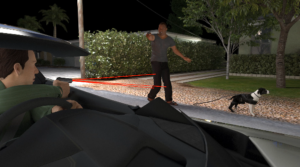
1. Clarifying Complex or Technical Testimony
Criminal defense cases often involve intricate details that can be challenging for jurors to understand, especially when the evidence includes technical or scientific elements. Forensic animations can simplify these complexities by providing a visual representation of the events in question. For example, in cases involving forensic pathology, an animation could illustrate the trajectory of a bullet or the angle of an attack, making it easier for jurors to grasp the defense’s argument regarding how the incident occurred. Animations can also clarify technical aspects of the case, such as the mechanics of a vehicle in a DUI case or the functioning of a firearm in a shooting incident. By turning abstract or complex data into a visual format, forensic animations can ensure that jurors have a clearer understanding of the defense’s expert testimony.
2. Reinforcing the Defense Narrative
Forensic animations can be powerful tools for reinforcing the defense’s narrative. By visually reconstructing the defendant’s version of events, animations can help the jury see the case from the defendant’s perspective. For instance, in a self-defense case, an animation can illustrate how the defendant was positioned relative to the alleged victim, the timing of the events, and the sequence of actions, thereby supporting the argument that the defendant acted out of necessity. Moreover, animations can help counter the prosecution’s narrative by offering an alternative interpretation of the evidence. If the prosecution uses an animation to demonstrate how they believe the crime occurred, the defense can use its own animation to propose a different scenario, highlighting inconsistencies or alternative explanations that support the defendant’s innocence.
3. Humanizing the Defendant
In criminal trials, it is crucial for the defense to humanize the defendant and evoke empathy from the jury. Forensic animations can play a role in this by portraying the defendant in a way that aligns with the defense’s portrayal of their character and actions. For example, in a case where the defendant is accused of excessive force, an animation could depict the defendant’s movements as cautious or reactive rather than aggressive, helping to frame the defendant as someone who was acting in self-defense rather than as an instigator. By providing a visual context that supports the defendant’s actions as reasonable and justified, forensic animations can help shift the jury’s perception in favor of the defense.
4. Demonstrating Inconsistencies in the Prosecution’s Case
Forensic animations can also be instrumental in highlighting inconsistencies or weaknesses in the prosecution’s case. By reconstructing the events based on the evidence presented, an animation can demonstrate that the prosecution’s version of events is physically or logically implausible. For instance, if the prosecution claims that the defendant had the opportunity to commit a crime within a specific timeframe, an animation could show that, given the distances and timings involved, it would have been impossible for the defendant to have committed the crime as alleged. This visual counter-narrative can be a compelling way to create reasonable doubt in the minds of the jurors, which is the ultimate goal of the defense in a criminal trial.
5. Engaging the Jury
Finally, forensic animations can enhance juror engagement. Jurors are more likely to remember and be persuaded by evidence that is presented in a dynamic and visually stimulating way. By breaking the monotony of verbal testimony and written exhibits, animations can capture the jury’s attention and make the defense’s arguments more memorable.
In summary, forensic animation demonstrative exhibits are a versatile and powerful tool in criminal defense trials. They help clarify complex testimony, reinforce the defense’s narrative, humanize the defendant, expose inconsistencies in the prosecution’s case, and engage the jury. When used strategically, these animations can significantly enhance the effectiveness of a criminal defense, potentially tipping the scales in favor of the defendant.


